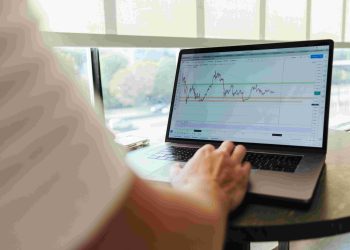Top Trend Rating Analysis Tools
In the fast-moving world of modern technology, the ability to predict trends isn’t just an advantage—it’s a necessity.
Whether you’re navigating the volatile tides of consumer behavior or forecasting industry innovation, staying ahead of the curve can mean the difference between success and irrelevance. Once, I found myself pitching a groundbreaking product that aligned with last year’s trends, only to watch it fall flat. It was then that I realized: you don’t just follow the wave; you learn how to ride it before anyone else notices it forming. This article dives into the tools that don’t merely chase trends but help you define them.

Why Traditional Methods Often Fail
For decades, market analysis relied heavily on surveys, focus groups, and gut instinct. But these methods, while insightful, often miss the bigger picture. They are reactive, not proactive—a snapshot of current sentiments rather than a dynamic projection of future developments. Employing outdated methods in today’s digital ecosystem can be akin to navigating a storm with a map printed yesterday: the landscape shifts, but your tools don’t update.
Consider the rise of AI and machine learning. These are not just technologies; they’re lenses that can reveal patterns invisible to the human eye. Social feeds, search engine data, and behavioral user analytics are treasure troves—if mined correctly. Tools that harness these data streams are where the real magic happens.
The Game-Changing Tools You Need
Let’s explore some cutting-edge tools that redefine trend analysis:
-
Google Trends:
This powerhouse allows quick insights into keyword popularity, comparing interest across regions and over time. Ever wondered what product will dominate retail next season? Google Trends often has the answer. -
Brandwatch:
A robust platform for social listening, Brandwatch extracts sentiment and conversations directly from social media platforms. This tool offers an intimate look into how your audience truly feels. -
TrendHunter:
This platform goes beyond data aggregation, diving deep into micro-trends and consumer innovations. It’s particularly useful for creative industries like fashion and design. -
SEMrush:
SEMrush doesn’t just cater to SEO specialists. Its Competitive Analysis and Market Explorer modules uncover broad industry trends, highlighting both opportunities and threats. -
Crimson Hexagon:
With its AI-driven approach, Crimson Hexagon captures real-time shifts in consumer attitudes. This is the kind of foresight traditional focus groups could never achieve.
What Makes These Tools Stand Out?
At their core, these tools thrive by reducing human bias. Unlike manual analysis, which is prone to blind spots, algorithmic trend trackers frame insights through pure data. For example, the algorithms behind SEMrush identify rising competitors not through speculation, but through concrete search engine data.
Moreover, they integrate cross-disciplinary methodologies. The fusion of psychology (consumer behavior), technology (data processing), and business (market strategy) ensures a comprehensive approach. By blending these perspectives, predictions aren’t a shot in the dark—they’re painstakingly calculated equations.
Breaking Away From Conventional Wisdom
The common wisdom says, “Follow the market leaders.” But what if the market leaders are wrong? History is rife with examples—from Kodak’s dismissal of digital photography to BlackBerry’s ignorance of touchscreen innovation. Recognizing that trends can reverse conventional industry norms is essential. Modern tools like Brandwatch capture these disruptive signals earlier than any traditional method could.
Practical Strategies for Action
How do you make these tools work for you?
-
Define Your Objectives:
Are you exploring new product opportunities or analyzing your competitors? Begin with clear, actionable questions. -
Invest in Training:
Many trend analysis platforms come packed with features, but understanding them maximizes their potential. Dedicate time to learning the tools inside out. -
Integrate Data Sources:
Combine social media analytics with search engine trends to avoid one-dimensional insights. -
Monitor Continuously:
Trends shift. Periodic checks ensure your strategies stay up-to-date.
Adopting these strategies can transform your decision-making, replacing guesswork with precision.
The Future of Trend Analysis
What does tomorrow hold for trend analysis tools? The next frontier lies in predictive AI, capable of simulating consumer responses to hypothetical scenarios. Imagine crafting an entire product line based on insights from AI-driven forecasts before spending a dime on manufacturing.
Virtual Reality (VR) may also play a role: envision testing consumer reactions within immersive digital environments. Beyond consumer products, societal trends—such as remote work or climate-conscious decisions—could also be analyzed in these spaces.
The emphasis will increasingly shift toward hyper-personalization. Instead of trends shaped broadly around demographics, algorithms could identify unique patterns at the individual level, enabling you to tailor products like never before.
Continual Learning for Sustained Success
Navigating tomorrow’s trends demands one thing above all: relentless curiosity. The tools mentioned here are only as effective as the effort you invest in mastering them. Commit to ongoing education. Explore webinars, forums, and certifications that delve deeper into these platforms.
One of my mentors once told me, “The most powerful asset isn’t knowing the answer—it’s knowing how to find it.” When it comes to trend analysis, this wisdom couldn’t be more apt. The landscape will continue to evolve, and only those willing to evolve with it will thrive.










